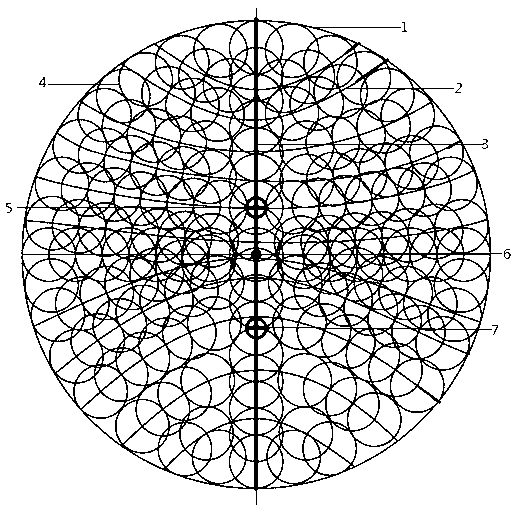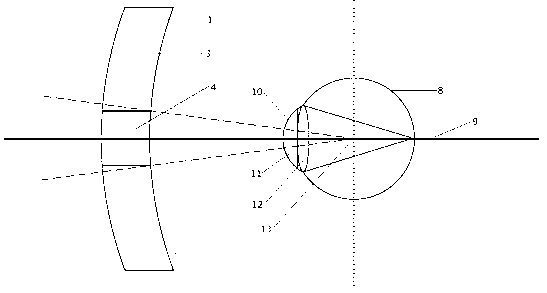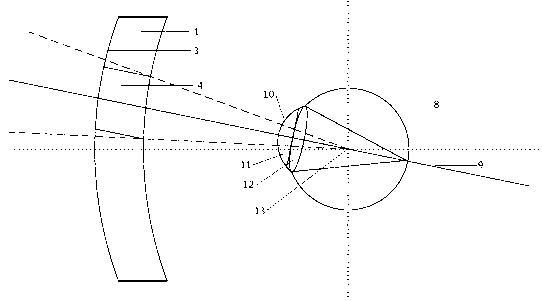Design method for novel multi-optical axis progressive multi-focal lens
A progressive multi-focus, multi-optical axis technology, applied in optics, optical components, glasses/goggles, etc., can solve problems such as different actual conditions of multi-optical axis systems
- Summary
- Abstract
- Description
- Claims
- Application Information
AI Technical Summary
Problems solved by technology
Method used
Image
Examples
Embodiment Construction
[0021] This design method considers the design of the progressive focus lens from the perspective of multiple optical axes, and realizes multiple spherical or non-spherical small pupils with gradual focus on one lens. Each optical axis corresponds to a small spherical or non-spherical pupil to design the corresponding light focal power, and perform overall surface fitting on the front or back surface of the progressive focus lens corresponding to multiple spherical or aspherical small pupils. At the same time, in the case of multiple optical axes, high-order polynomials are used to design the meridians of progressive multifocal ophthalmic lenses, so that the mean square error of the surface shape relative to the spherical surface in each small spherical or non-spherical pupil is greatly reduced, especially for the eyes. Compared with other design methods, the blind area in the observable area is greatly reduced when moving left and right. The details are as follows.
[0022] ...
PUM
 Login to View More
Login to View More Abstract
Description
Claims
Application Information
 Login to View More
Login to View More - R&D
- Intellectual Property
- Life Sciences
- Materials
- Tech Scout
- Unparalleled Data Quality
- Higher Quality Content
- 60% Fewer Hallucinations
Browse by: Latest US Patents, China's latest patents, Technical Efficacy Thesaurus, Application Domain, Technology Topic, Popular Technical Reports.
© 2025 PatSnap. All rights reserved.Legal|Privacy policy|Modern Slavery Act Transparency Statement|Sitemap|About US| Contact US: help@patsnap.com



